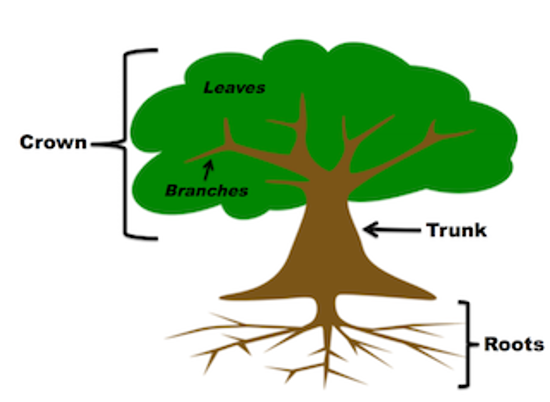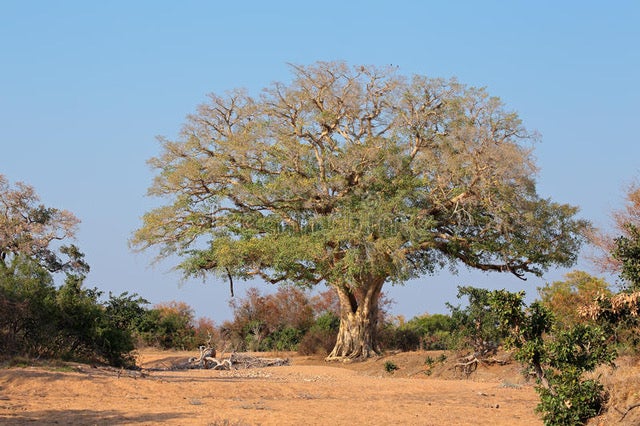Master Gardeners: Learning the parts of a tree
Published 12:06 am Saturday, August 1, 2020
|
Getting your Trinity Audio player ready...
|
Texas Certified Master Gardener, Orange County Master Gardeners
There are five main parts to a tree – roots, crown, leaves, branches and trunk.
The roots are the parts of the tree growing underground you don’t normally see. Trees have lots of roots. Usually the amount of roots is about the size of the whole tree you see above ground. It takes a lot of roots to hold up a 100-foot tree. The roots have three jobs to do. They hold the tree up, to collect water and nutrients from the soil and store the water and nutrients for future use.
The Crown is made up of leaves and branches on the top of the tree. When you look up at a tree you are looking at the crown. The leaves are the ones collecting energy from the sun that is called photosynthesis and allows the tree to remove extra water to keep it cool just like we do when we sweat.
Leaves are part of the Crown of the tree. Leaves take the energy from the sun and convert it into sugar or food for the tree. You could call the leaves the food factories of the tree. They contain chlorophyll, which gives the leaves the color green. It is very important in photosynthesis as the leaves use the suns energy to convert carbon dioxide from the atmosphere and water from the soil into sugar and oxygen. The sugar is stored in the tree’s branches, trunks and roots and the oxygen is let back into the air.
Branches provide support to distribute the leaves efficiently for the type of tree and where the tree is located. They also serve and conduits for water and nutrients and storage of extra sugar.
The trunk of the tree provides support and holds up the crown. It also transports water and nutrients to and from the soil and sugar from the leaves. The trunk of the tree is made of 5 different parts – the bark, cambium, sapwood, heartwood and pith.
The bark is the outer layer of the tree, branches and twigs. It is the trees protective layer covering the delicate inner layers. The bark is made up of inner and outer bark with the outer layer being dead cells kind of like our hair and fingernails and the inner layer being living cells. The main job of the inner layer of bark is to carry sap, which is made from sugar, from the leaves to the rest of the tree. There are a number of things that come from inner bark – latex, cinnamon and some poisons.
The Cambium is a thin layer of living cells just inside the bark that makes new cells each year allowing the tree to grow wider.
Sapwood or xylem is made up of a network of living cells bringing water and nutrients up from the roots to the branches, twigs and leaves. It is the youngest wood of the tree. Over time the inner layers die and become heartwood.
Heartwood is the dead sapwood that is in the center of a tree trunk. It is the hardest wood of a tree giving it support and strength. It is usually darker in color than the sapwood.
Pith is the tiny dark spot of spongy living cells right in the center of the tree trunk. Essential nutrients are carried up through the pith. By being in the center of the tree, it is protected from insects and damage by wind or animals.
What is the fastest growing tree? Bamboo is one of the fastest growing plants in the world. It can grow about 3 feet in a single day in the right conditions.
What tree has roots that go the deepest in the ground? The wild fig trees in South Africa have roots that are almost 400 feet deep in the ground.
For Horticulture information and answers to your questions contact the Master Gardener Hotline Tuesday and Thursdays from 10 a.m. – 2 p.m. at 409 882-7010. After these times send your inquiries to https://txmg.org/orange Contact or our Facebook page Orange County Texas Master Gardeners.
The next Master Gardener certification training course will start on Sept. 3 with orientation on Aug. 27. Due to the current COVID-19 crisis, classes will be held virtually every Thursday morning at 9a.m. for about 4 hours. If you are unable to sit in on the online session, it will be recorded for you to view to prior to the next session. Cost for the class will be $150 which will include your training handbook, necessary supplies, speakers’ fees, and other items. For more information please visit our website above and click the link JOIN MG.










